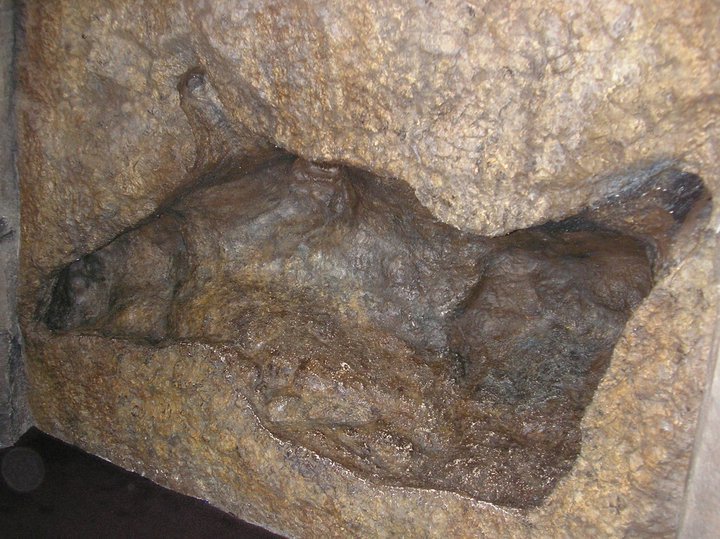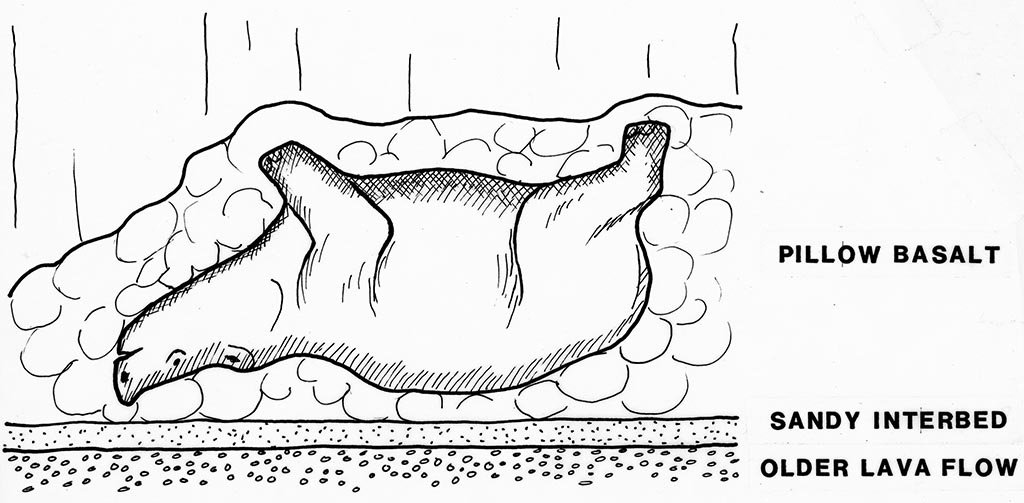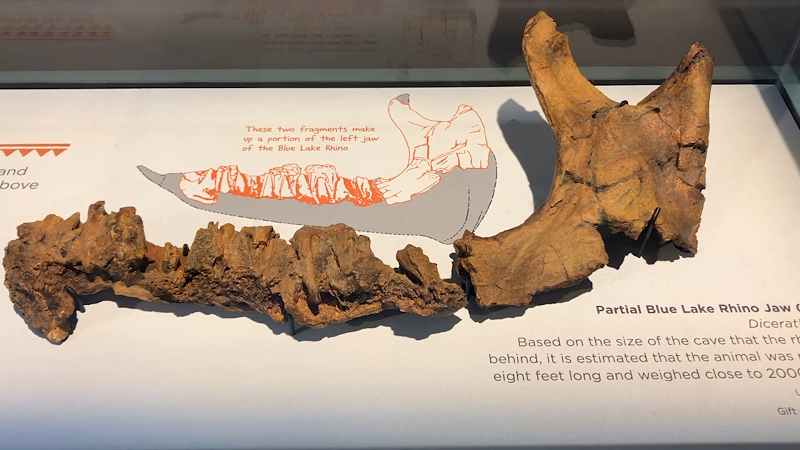An Unexpected Discovery
In the summer of 1935, two Seattle couples, George B. and Ruth L. Peabody, and Haakon and Asiang Friele, stumbled upon a peculiar cave while rockhounding near Blue Lake in Grant County, Eastern Washington in search of petrified wood.
Upon closer inspection, they discovered that the cave housed a scattering of ancient fossilized bones. Little did they know that their finding would lead to the unveiling of one of the most extraordinary fossils known to humankind: the Blue Lake Rhino.


Word of the bones soon reached geologist George Beck at Washington State Normal School (now Central Washington University). Intrigued by the discovery, Beck and an assistant decided to visit the cave, where they examined the bones and the cave’s unique structure. Beck determined that the cave was a mold of a rhinoceros that had died a staggering 15 million years ago. As it turned out, a basalt flow had enveloped the already deceased beast, preserving a mold of its body in stone.
Beck published his first article on the cave in late 1935, describing the mold as a “supposed rhinoceros” and noting the forwarding of the bones to Dr. Chester Stock at the California Institute of Technology for further examination. Despite his hopes for the discovery of additional animal molds and petrified bones, none have been found in the basalt of Eastern Washington to this day.
Researchers proposed that the mold formed when the rhinoceros died, its bloated body floating upside-down in a shallow lake. Molten rock flowed into the water, forming pillow lava as it cooled and built up layers of pillows that were cooled enough to mold around the dead rhino but not burn it, preserving its form for millions of years.
From Basalt to Museum
To better understand the shape of the fossil mold, researchers Wyatt Durham and Donald Savage made a plaster cast of the cave. This seven-foot-long replica was eventually donated to the Burke Museum in Seattle by Savage. In 1979, Arn Slettebak, the museum’s Curator of Education, proposed recreating the cave from the cast to share the extraordinary tale of the Blue Lake Rhino.

Slettebak and his team spent 450 hours crafting the new cave, replicating the exterior and creating copies of the bones owned by the California museum. The Blue Lake Rhino cave, a testament to the remarkable story of a 15-million-year-old rhinoceros, remains on display at the Burke Museum, captivating the minds of both children and adults.
A Timeless Wonder
The original cave, nestled in Eastern Washington, is still difficult to access but stands as one of the most unusual and fascinating fossils in the world. The enigmatic tale of the Blue Lake Rhino continues to enthrall and inspire curiosity, serving as a powerful reminder of the wonders that can be uncovered when nature and history collide.
- Online rock and mineral club for collectors of all levels!
- Find community with like-minded rock and mineral enthusiasts.
- Monthly Giveaways!
- Free Access to Entire Digital Library of Products (annual memberships)


